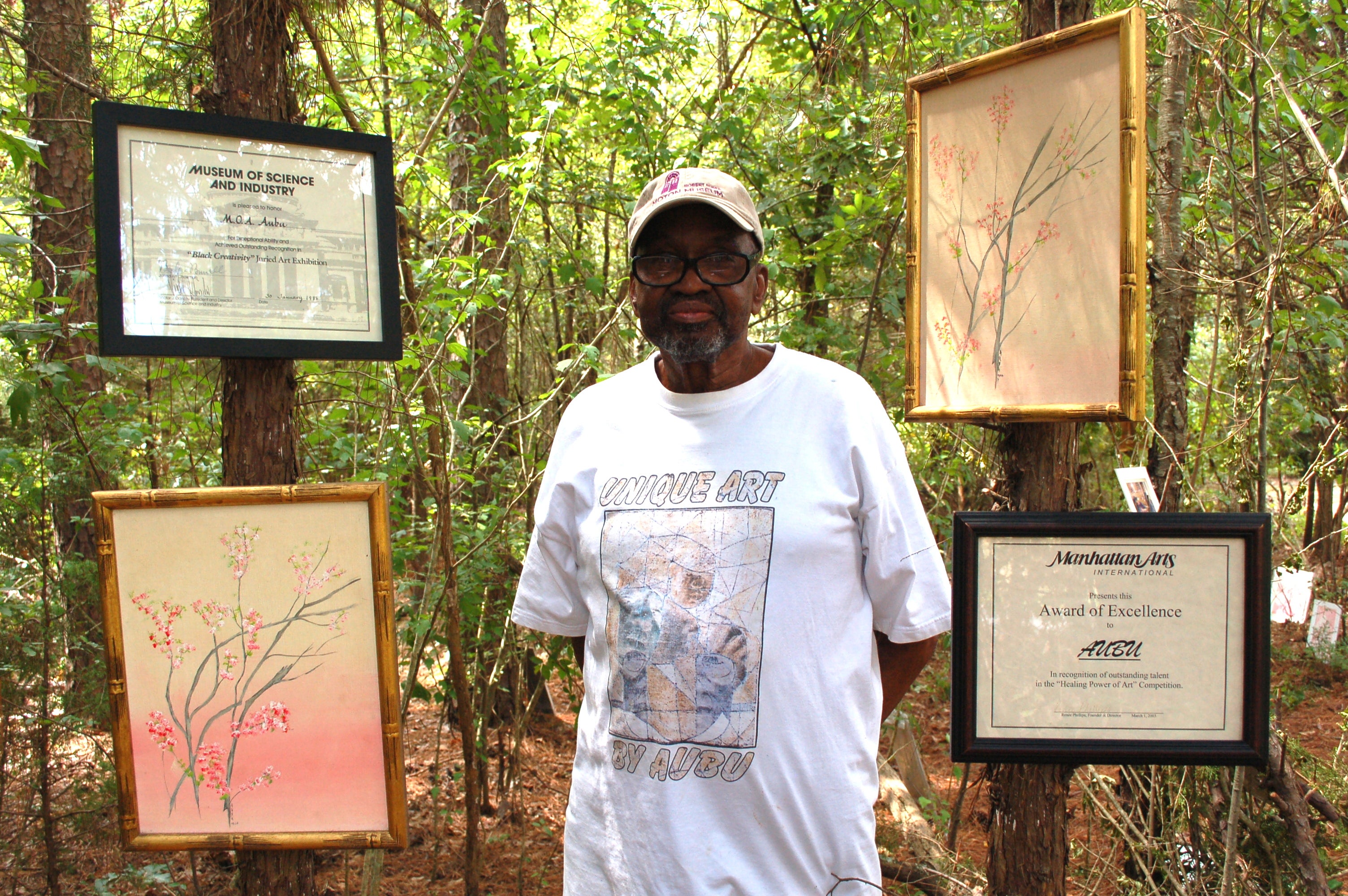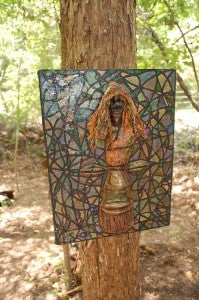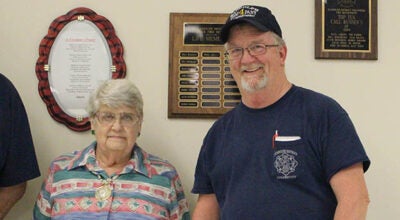Cumberland native taps artistic roots
Published 12:36 pm Thursday, January 14, 2016

- Surrounded by his awards and art, Cumberland native and Harlem resident John Leon Clark, also known as Aubu, stands in the forest on Route 45.
The heart of the Harlem Renaissance is found in the influential work that came from the artistic explosion that occurred in New York between the end of World War I and the mid-1930s.
Cumberland County-native John Leon Clark is the epitome of the massive influence that the renaissance left on millions of people and its mark on American history.
The 81-year-old, who’s also known in his circles as Aubu, his artistic name, was raised on the Old Green Creek attending a small community school, wearing cardboard in his shoes and working in tobacco and wheat fields in Cumberland.
The values he learned from hard work and dedication in the country would lead him to the big city as a well-known award-winning writer, painter, performer, musician and comedian.
His work has led him to participate in over 23 solo exhibitions, numerous group exhibitions and contributions to nearly 50 collections.

Clark’s pieces, such as this one, reflect his deep thought. “Just from within. It’s spontaneous,” Clark said of his artistic inspiration.
Almost 200 pieces of Clark’s art has gone to international collector David Brown in California.
Clark, who lives in Harlem, attended Cumberland Training School, and quit school after the ninth grade.
After years of struggle that included drugs and alcohol, in the 1960s Clark began to pursue a creative path and began to develop his thinking in a more creative manner.
“It was sudden, serendipitous,” he said of his self-development. “In 1971, one day I sat at the piano and began to play original compositions. And I can’t read music, I can’t write music nor listen to a piece composed by someone else and play it.”
When he stroked the keys of the piano, he played from deep within his soul.
The composition that he poured out that day led to a plethora of artistic abilities for Clark.
In 1974, he began painting on canvas, which would lead to his award-winning career. “It’s one of those rare experiences that you can’t explain it … To me, it is natural,” he said of his artistic skill using brushes and paint.
When he first began painting, his first piece was made up of lines and various colors.
Over the years, Clark went through phases of painting, from Chinese to unique collages to pieces connected to nature, featuring twigs, brush and grass.
His “artistic abilities are anchored deep in the realm of creative imagination,” noted his biography in “GITA RUNNIN’ DA SWEETMAN IZ COMIN,’” a book he published in 1998.
Clark’s paintings are evidence of his deep thought process. Some of his works feature sunsets behind Dogwood trees while others involve leaves from the forest ground. When Clark paints, he says he imagines himself in the scene, whether it’s on the tops of mountains or near large bodies of water.
While Clark worked as a butler for various businesses, he became a comedian, where he toured and performed across the nation. He went to amateur night at The Apollo Theater and years later worked with comedians Martin Lawrence and Tracy Morgan.
For years, Clark also taught art to youth in New York and worked in the community through various organizations, such as the community board, where he advocated for art in New York’s schools.
“Just from within. It’s spontaneous,” he said of his artistic inspiration. “I never know what I’m going to do. It is instinct. Just pure instinct, and I can do it effortlessly,” he said.
Authors W.E.B. Dubois, Maya Angelou and William Shakespeare have had an influence on him and his work, he said.
“Over the years, gradually, I’m very solitary … I don’t talk a lot outside. If I’m on stage I go crazy,” he said, contrasting his life behind the easel to that of the stage.
Clark, who served in the Air Force, paints every day in his home.
“Wherever I’ve gone, I’ve never forgotten these woods, not ever,” he said of nature’s influence on him while standing alongside Route 45 in Cumberland. “Even in New York.”
“This is the roots is here. The roots is down here, good, bad and indifferent. This is the roots, and I never forgot those roots,” he said.
Years ago, while painting, Clark had what he terms a breakthrough to Africa. “This was when that type of work started,” he said, pointing to one of his acrylic art pieces.
Aubu, Clark’s artist name, is the name of a young boy who showed bravery in the face of leprosy living in Africa, he said.
Through his artistic vocations, Clark has found unprecedented peace.
“It’s extreme peace … I haven’t been unpeaceful in I can’t tell you in years, in years,” he said of his satisfaction.
He travels the world to see the vegetation, not buildings or structures. “I go to get the feel of the people, the mood and the feel of the people. And the vegetation.”
The top two people that made an impact on Clark’s life are Alice Clark Jones, his great-grandmother, and Robert Lee Scales, one of his teachers.
“I always thought of him and my great-grandmother as the most powerful influences from my youth,” Clark said.




